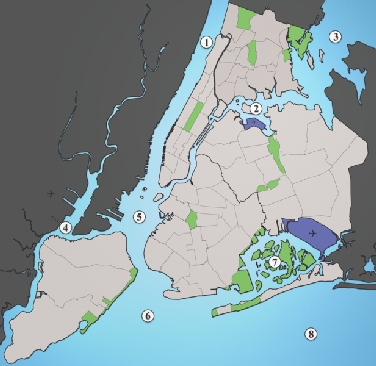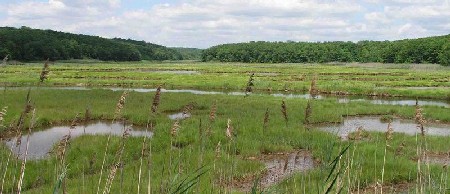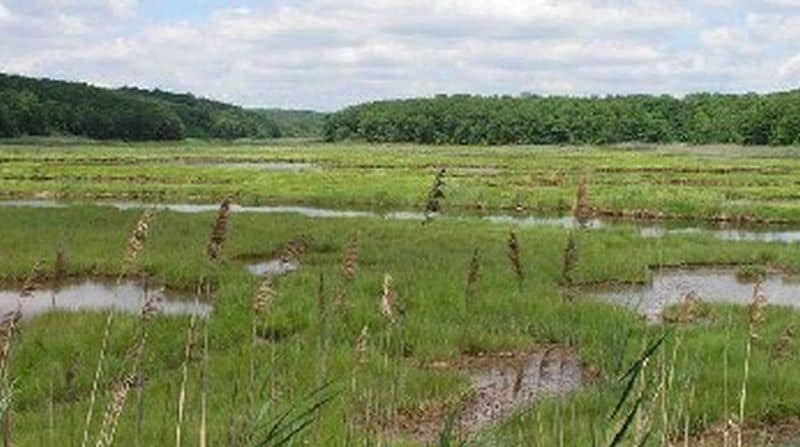Bordering what is probably North America’s busiest travel hub, the JFK Airport in NY is the Jamaica Bay. A cluster of salt-water marsh lands, this estuary covering around 25,000 acres is nutrient-rich with marsh grass and sea lettuce.

No. 7: Jamaica Bay
These rich food resources have made this southwestern tip of Long Island an excellent habitat for wildlife, fish and migratory birds. Waterfowl, land birds, migratory insects form part of over 200 species on federal and state lists.
Jamaica Bay has a protected status and is managed jointly by the National Park Service and the Port Authority. Despite this, the Bay has been disturbed by the city repeatedly over the years. Dredging due to construction needs at JFK airport and runoff from sewage disposal plants have resulted in oxygen poor turbid water.

Salt Marshes
Marsh area is being lost at this biologically productive habitat at the rate of 40 acres annually for the past 4 years. However, a new study by the Jamaica Bay Watershed Protection Plan Advisory Committee (JBWP) has recently observed that they could disappear by 2012. This is 12 years earlier than a previous estimate by the city’s Department of Environmental Protection. The department previously gauged that until 1999 the bay lost half of its tidal wetlands while evidence from satellite and aerial mapping from 2003 to 2005 suggests a faster rate of depletion.
Created in 2005, the mandate of the JBWP committee is to propose avenues to help preserve one of New York’s last remaining wilderness areas. Key observations of the Committee in their report included:
That even today over 80 fish species and 20 percent of North America’s migratory bird species stop in Jamaica Bay’s marshes.
The Bay also plays a vital role of flood protection for humans.
That tidal creeks on the marsh islands are expanding, vegetation is giving way to mud flats and sand flats.
That the exact cause is of the rapid decline being observed remains unknown. However, it lists one probable cause as the high nitrogen content of treated sewage
This is being disputed by the Department of Environmental Protection, which is also carrying out its own independent survey. Their report is due in October 2007.
Read: Reuters
Also See: Jamaica Bay
Image 1: Jamaica Bay
Image 2: Salt Marsh


